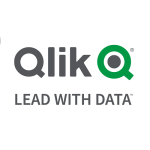What is our primary use case?
We deal with government agencies that compile stats and data. For instance, the use cases for the department of education are all school-related. They need to know the number of schools in a given region, attendance, etc. They also need to monitor monthly changes in the data, so they run analytics to see where enrollment and attendance are dropping or how schools are performing.
Recently, we developed an application for the South African statistical bureau. They use Power BI for their dashboards to show precisely how many people were counted in which areas, and where they have the challenges. We have different use cases depending on the project and the client's requirements.
It's deployed in the cloud because Microsoft has switched to offering Power BI as a service. Most of our clients are doing all of their business intelligence primarily on the cloud, but we still have clients that are running SQL who prefer to do their own intelligence internally instead of using cloud solutions.
What is most valuable?
The one feature most of our customers like is data visualization. When we were doing BI directly from SQL, most users found it challenging to create their own reports. Power BI has self-serve analytics that the end-users can do themselves. On most projects, people are primarily using data visualization and self-serve analytics.
There are probably several other useful intelligent tools included with Power BI that we never use, but they might be good for other use cases. For instance, if you're selling consumer products, you might benefit from Power BI's ability to track sales performance. But our government customers mostly use data visualization internally to make decisions.
What needs improvement?
I'm not a heavy Power Bi user. I use it as my CRM, and it gives me all the information that I need. I haven't found anything that isn't useful for what I'm working on at the moment. Maybe later, I might think of something and find that Power BI doesn't have. It's quite an improvement compared to using Microsoft SQL for business intelligence.
For how long have I used the solution?
We've been working with Power BI for many years. Before we started using Power BI, we were on SQL SSIS and SSRS. We've been in the BI business launched back in 2003. Most of our business was business intelligence even though we didn't have a lot of analytics.
We do quite a lot of data warehousing, business intelligence, etc., but when we started, we were mainly dealing with data manipulation. I would say it has been more than 15 years.
Buyer's Guide
Microsoft Power BI
September 2025
Learn what your peers think about Microsoft Power BI. Get advice and tips from experienced pros sharing their opinions. Updated: September 2025.
868,787 professionals have used our research since 2012.
What do I think about the stability of the solution?
I don't have any complaints because we used to be a partner of a company that set up our environment. They are a sales partner, and our sales are very good, but there were always issues with the technical support. At the moment, I would still recommend everyone to move to Microsoft Power BI regardless of their environment.
What do I think about the scalability of the solution?
It's highly scalable and stable.
Which solution did I use previously and why did I switch?
One of the vendors we used to work with was Qlik, but we found that Qlik's support wasn't as good as what we're getting from Microsoft. With IBM, the biggest challenge was that companies didn't have the analytics skills to use their solution. Customers would complain that it didn't do what they wanted it to do, but it is not the tool. It's the skill that you have on the market.
Microsoft made sure they certified competent solution implementers. It was great. We were privileged to be one of those companies that Microsoft picked, and they helped us train some of our technicians to be adept at some of these solutions.
All of our technicians are certified, so Microsoft refers certain organizations to us locally for help implementing their solutions. We have a solid technical team, especially around the Microsoft Power Apps, including Power BI.
How was the initial setup?
Deploying Power BI is straightforward because they've made it so easy with cloud solutions when they came out with the Microsoft Power Apps. Power Apps includes Power BI, Microsoft Flow, and some others. I do everything myself, so I can do my workflows in the background of Power BI on all the applications even though I'm not an everyday applications development person. I haven't done development in years.
With Power Apps, you don't necessarily need to install anything because it's already there on the cloud. You customize it and point it to your data sources. Within a couple of minutes, you're done. Then from there on, you can customize your reports however you want. I think it's effortless to work with.
The number of people needed for deployment depends on the size of the organization, and the scope of what you're trying to do. You may have a small organization with fewer than 500 people, but they might deal with a lot of data. That means the project is going to be very big.
Conversely, you could have an organization with about 2,000 people, but they are not a data-intensive organization. Then you will need just a few people. For much larger organizations, you'll find that you might need to have the whole applications development team of between five to 10 people for the actual implementation, including your project manager, business analysts, and various technical support personnel.
For a big organization, you would maybe have five technical guys, including your lead as well as two senior technical people and two juniors. Then as the project grows, you can add four more. At the end of the day, we're looking at about five to 10 people for a bigger project.
However, it's not the same as an on-prem deployment. Most of the work is customization because everything else has been done on Azure. Generally, with things like your standard Power BI deployment, you need just about five people. That includes the project manager and the business analysts plus two or three technical people.
You do an installation and all the customization a client wants, but from there on, you run out of work to do because everything is running smoothly. I've heard some say that it's making people lazy because if you do everything correctly the first time around, you won't have anything to do for a couple of months except maybe change a couple of things for users. From the technical point of view, you find that you have absolutely no work to do until you move on to the next client. The deployment is quick versus how long it used to take as before we went on to Azure.
You don't need a large team for maintenance because somebody else takes care of it. At most, you need two or three technical people and then an account manager. Probably about three. You're not managing the service or the infrastructure. You are just managing the environment.
The management is much easier compared to how we used to do it before. You needed maybe six or seven people, with some managing the environment and others the infrastructure. For example, the department of education has a user base of more than 500,000 people, but the whole environment is managed by two people. With the Azure infrastructure, everything running in the background is taken care of.
What was our ROI?
The return on investment with Microsoft is quite good. The value of the product is far higher than the price you pay. The most significant added value with Microsoft products is their ease of use. If you buy things like Power BI, you become a Microsoft partner and gain access to some customer training, so you learn to optimize everything related to Power BI.
They go the extra mile. They have the training online, so when you get stuck, you can go through the training and know exactly where you made a mistake instead of going out to a training institution and spending a lot of money for precisely the same training. The licenses you pay over five years don't even make a dent in some companies' budgets.
For instance, one of our customers was running a Software AG solution analytics solution. Even though we are a Software AG partner, we suggested they go with a different solution because of their budget. We implemented Power BI, and now they don't want to go back to the previous product because they're saying this one is much more user-friendly than before.
What's my experience with pricing, setup cost, and licensing?
Most of the customers we work with go for volume licenses. Some pay annually or get a more extended license for three to five years. All of the licenses are on an annual basis, but Microsoft will amortize it to an extent. If it's five years, they'll include the possible interest they might have the following year. Ideally, their licensing scheme is an annual license, but they make it easier for some of our clients to take a five-year license but package everything inside for them to buy the license for five years.
I think that's helpful because most government institutions budget on a five-year basis. They have a five-year plan broken down into an annual OPEX. The CAPEX will be five years, and everything else would be OPEX. Most of these licenses get put on an OPEX whereby the client pays once. Then for the five years, they don't necessarily have to worry about anything with Microsoft.
These licenses are in US dollars. With a long-term license, the client is unaffected when the exchange rate goes up. However, if the exchange rate goes down, you don't get refunded from the excess money you've paid. I guess that is a risk you take in business.
What other advice do I have?
I would rate Microsoft BI nine out of 10. We buy from a couple of vendors, and Microsoft is always at the top of the list for ease of use, simplicity, and cost. I've used the other vendors, but I'm still in love with Microsoft.
Which deployment model are you using for this solution?
Public Cloud
Disclosure: My company does not have a business relationship with this vendor other than being a customer.




















